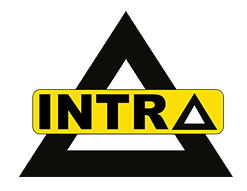7. An Update on Management of Adult Patients with Acute Respiratory Distress Syndrome: An Official American Thoracic Society Clinical Practice Guideline
CEUs: 2 Clinical
Average read time: 65 minutes.
Short Summary of the Article:
The article, issued by the American Thoracic Society, provides updated clinical practice guidelines for the management of Adult Respiratory Distress Syndrome (ARDS). The guidelines incorporate new evidence on various treatments, including the use of corticosteroids, venovenous extracorporeal membrane oxygenation (VV-ECMO), neuromuscular blocking agents, and positive end-expiratory pressure (PEEP). These recommendations are based on a multidisciplinary panel’s review of the latest evidence using the GRADE framework.
Key points include:
- Corticosteroids: Suggested for ARDS patients due to their moderate certainty of reducing mortality and shortening hospital stays.
- VV-ECMO: Recommended in specific cases of severe ARDS, particularly when other treatments are not effective, though with low certainty due to its invasive nature.
- Neuromuscular Blockade: Recommended in the early stages of severe ARDS to possibly reduce mortality, though evidence certainty is low.
- PEEP: Higher PEEP without lung recruitment maneuvers is recommended for moderate to severe ARDS cases, while prolonged lung recruitment maneuvers are not recommended due to potential harm
Learning Outcomes
Upon completion of this activity, you should have an understanding of:
- The Use of Corticosteroids in ARDS: You will understand when corticosteroids are recommended for ARDS treatment, their benefits in reducing mortality, and potential risks associated with their use.
- VV-ECMO in Severe ARDS: You will learn the criteria for selecting patients for VV-ECMO treatment in severe ARDS, including the invasive nature and resource-intensity of this approach.
- Application of Neuromuscular Blocking Agents and PEEP: You will understand the recommendations for using neuromuscular blocking agents in early severe ARDS, the reasoning behind higher PEEP strategies, and why lung recruitment maneuvers should be avoided in certain patients.
0 of 15 Questions completed Questions: You have already completed the quiz before. Hence you can not start it again.
Quiz is loading... You must sign in or sign up to start the quiz. You must first complete the following:
0 of 15 Questions answered correctly
Your time:
Time has elapsed
You have reached 0 of 0 point(s), (0)
Earned Point(s): 0 of 0, (0) What is the recommended treatment for patients with ARDS regarding corticosteroids? pg 24 What type of ventilation strategy is recommended for ARDS patients to limit lung injury? pg 25 What is the suggestion regarding the use of VV-ECMO for severe ARDS? pg 26 True or False: Corticosteroids have been proven to reduce ARDS mortality in all cases. pg 27 In patients with moderate to severe ARDS, what is the recommendation regarding PEEP? pg 25 For patients with early severe ARDS, what is the recommended approach to neuromuscular blockade? pg 25 True or False: Prolonged lung recruitment maneuvers are recommended for patients with moderate to severe ARDS. pg 25 What is the recommended approach for prone positioning in ARDS patients? pg 25 Which patient population is most likely to benefit from VV-ECMO? pg 26 What is the primary concern when using VV-ECMO in ARDS patients? pg 26 Which of the following is NOT recommended in the management of ARDS? pg 25 True or False: The use of high PEEP in mild ARDS is associated with improved outcomes. pg 29 What should be the approach regarding corticosteroid use for nonintubated ARDS patients? pg 28 In terms of resource use, what is a significant consideration for VV-ECMO in ARDS? pg 26 What is the general recommendation for initiating corticosteroid treatment in ARDS patients? pg 28
Quiz Summary
Information
Results
Results
0 Essay(s) Pending (Possible Point(s): 0)
Categories
1. Question
Hint
2. Question
Hint
3. Question
Hint
4. Question
Hint
5. Question
Hint
6. Question
Hint
7. Question
Hint
8. Question
Hint
9. Question
Hint
10. Question
Hint
11. Question
Hint
12. Question
Hint
13. Question
Hint
14. Question
Hint
15. Question
Hint
(Max of 3 Attempts)


